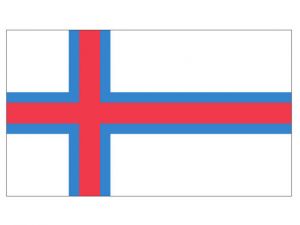Difference between revisions of "Language/Faroese/Culture/Faroese-Literature"
m (Quick edit) |
m (Quick edit) |
||
| Line 80: | Line 80: | ||
* [[Language/Faroese/Culture/Faroese-Holidays|Faroese Holidays]] | * [[Language/Faroese/Culture/Faroese-Holidays|Faroese Holidays]] | ||
* [[Language/Faroese/Culture/Faroese-Folklore|Faroese Folklore]] | * [[Language/Faroese/Culture/Faroese-Folklore|Faroese Folklore]] | ||
<span class='maj'></span> | |||
==Sources== | |||
* [https://en.wikipedia.org/wiki/Faroese_literature Faroese literature - Wikipedia] | |||
* [https://www.faroeislands.fo/arts-culture/literature/ Faroese Literature] | |||
* [https://www.britannica.com/art/Faroese-literature Faroese literature | Britannica] | |||
{{Faroese-Page-Bottom}} | {{Faroese-Page-Bottom}} | ||
Revision as of 21:44, 2 April 2023
Faroese literature is a rich tapestry woven from the threads of storytelling, poetry, and prose. At its heart lies a deep connection to the Faroese language and culture, and the stories and ideas it contains offer a unique insight into the world of the Faroe Islands. In this lesson, we will explore some of the most famous Faroese literary works and authors, and their impact on Faroese culture.
Prose
William Heinesen
William Heinesen (1900-1991) is one of the most celebrated figures in Faroese literature, and his works have been translated into many languages. Born in the town of Tórshavn, Heinesen studied art in Copenhagen before returning to the Faroe Islands to become a writer. His novels are known for their poetic language, vivid imagery, and exploration of the Faroese psyche. His most famous works include "The Black Cauldron" (1949), "The Lost Musicians" (1950), and "Debriefing" (1972).
Jørgen-Frantz Jacobsen
Jørgen-Frantz Jacobsen (1900-1938) was a Faroese author who is best known for his novel "Barbara" (1939), which is considered a classic of modern Faroese literature. Set on the remote island of Nólsoy, the novel tells the story of a young woman who falls in love with a sailor, and explores themes of love, loss, and identity. Jacobsen's writing is characterized by its poetic language and vivid descriptions of the Faroese landscape.
Gunnar Hoydal
Gunnar Hoydal (born 1941) is a contemporary Faroese author who has published several works of fiction, poetry, and drama. His most famous novel is "The Cathedral" (1976), which tells the story of a man who becomes obsessed with building a cathedral on a remote island in the Faroe Islands. The novel is notable for its vivid imagery and exploration of themes such as isolation, identity, and faith.
Poetry
Janus Djurhuus
Janus Djurhuus (1881-1948) is considered the father of modern Faroese poetry, and his works have had a profound impact on Faroese culture. His poetry is known for its use of traditional Faroese forms, such as the rimur, as well as its exploration of themes such as love, nature, and mythology. Some of his most famous works include "The Land of Maybe" (1911) and "The Seabirds Cry" (1936).
Tóroddur Poulsen
Tóroddur Poulsen (born 1947) is a contemporary Faroese poet who has published several collections of poetry. His poetry is characterized by its musicality, rootedness in Faroese culture and language, and exploration of themes such as the natural world, human relationships, and spirituality. Poulsen's work has been translated into several languages.
Folklore
Faroese folklore is a rich tapestry of legends, myths, and supernatural creatures that offer a glimpse into the history and culture of the Faroe Islands. Many of these tales have been passed down through generations, and continue to be an important part of cultural identity. Some of the most famous examples of Faroese folklore include:
The Selkie
The selkie is a mythical creature that appears in Faroese folklore as well as the folklore of other northern European countries. It is a seal that can transform into a human, and is often portrayed as a beautiful woman. The selkie is said to have the power to seduce men and women alike, but always returns to the sea in the end.
The Huldufólk
The huldufólk ("hidden people") are a type of supernatural creature that are said to live in the Faroe Islands. They are invisible to most people, but can sometimes be seen by those with second sight. The huldufólk are believed to be mischievous and unpredictable, and are often associated with natural landmarks such as rocks and waterfalls.
The Skrímsli
The skrímsli is a creature that appears in Faroese folklore as well as the folklore of other northern European countries. It is a type of troll that is said to live in the mountains, and is often portrayed as a fearsome and dangerous beast. The skrímsli is known for its ability to shape-shift, and is said to be able to take on the form of any animal or object it desires.
Conclusion
Faroese literature and folklore offer a window into the unique cultural identity of the Faroe Islands. The works of authors such as William Heinesen and Jørgen-Frantz Jacobsen have left a lasting impact on the world of literature, while the myths and legends of Faroese folklore continue to inspire and fascinate people around the world. Whether through poetry, prose, or storytelling, the Faroese people have a rich tradition of sharing their stories and ideas with the world.
Videos
Faroese: Languages of the World: Introductory Overviews - YouTube
"Sjúrðarkvæði" - Faroese Tale about Sjúrður Sigmundarson - YouTube
Faroese Evening News - Sæla is denied funding from the Faroese ...
Other Lessons
